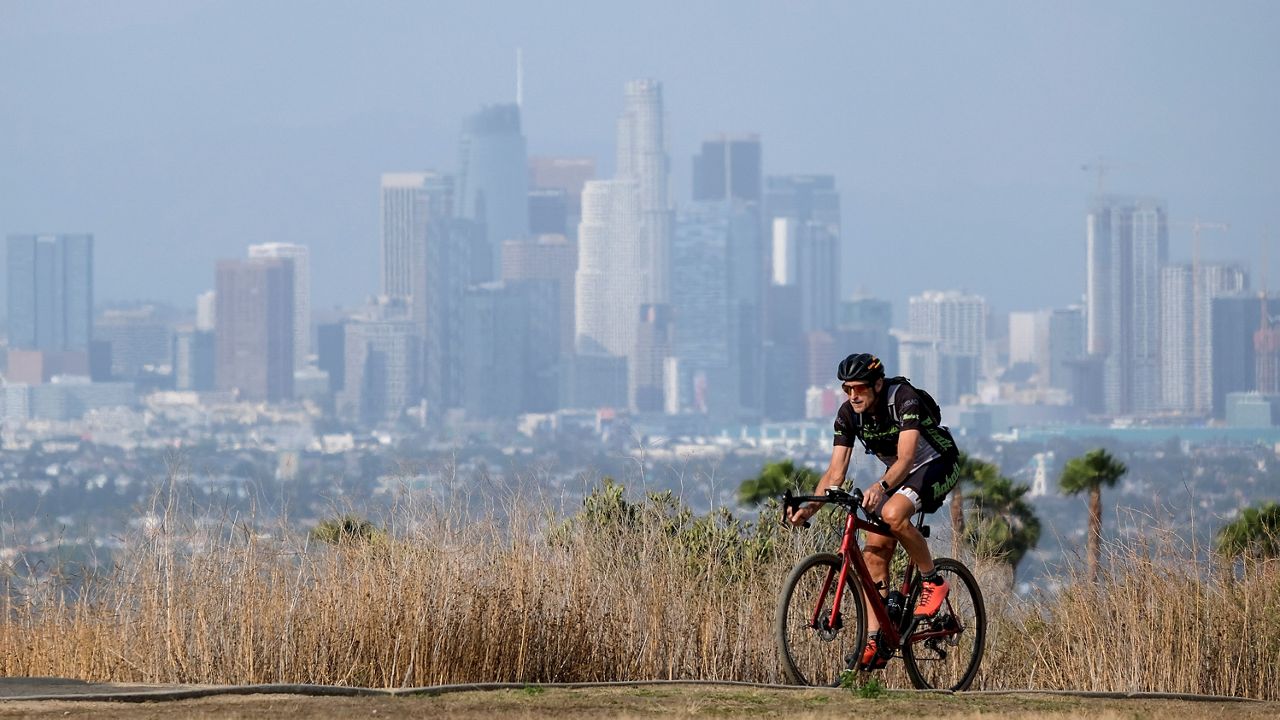LOS ANGELES — As Los Angeles braces for a seventh atmospheric river in less than a month this weekend, LA’s Climate Emergency Mobilization Office presented a plan to cope with another weather extreme that’s only months away: heat.
What You Need To Know
- The city will increase the number of so-called resilience hubs, which provide shade, cooling, internet and transportation services in buildings that are energized with renewables and backed up with battery energy storage
- Already the city operates a network of cooling centers during extreme heat events that includes 73 libraries
- Equipped with solar panels, backup power, shade and emergency food and water supplies, resilience hubs will target communities that are at highest risk for the negative effects of climate change
- Resilience hubs will also provide ongoing services and programs throughout the year
The city will increase the number of so-called resilience hubs, which provide shade, cooling, internet and transportation services in buildings that are energized with renewables and backed up with battery energy storage.
“Extreme heat is LA’s primary climate hazard,” LA Chief Heat Officer Marta Segura said Thursday during a webinar on building resilience to extreme heat in California hosted by The Climate Center — a think tank working to accelerate climate decarbonization.
Resilience hubs, Segura said, save lives.
Already the city operates a network of cooling centers during extreme heat events that includes 73 libraries, but Segura said the city is working on a heat action plan that will expand the number of resilience hubs to include nonprofits, shelters and parks.
Equipped with solar panels, backup power, shade and emergency food and water supplies, resilience hubs will target communities that are at highest risk for the negative effects of climate change. According to the UCLA Heat Map, disadvantaged, low-income and pollution-burdened communities experience as much as 15% more hospitalizations and premature mortalities during extreme heat waves.
Segura cited the Green Meadows Recreation Center in South LA as a model example for a resilience hub.
The city began retrofitting the Department of Recreation and Parks facility in 2019 to add solar panels and shading over its exterior bleachers. It will also add solar panels over its parking lot, shading infrastructure in other parts of the park and a battery energy storage system to maintain power in case of a blackout.
The city will also ensure there is community access to Wi-Fi and a computer center inside the building, as well as transportation to the facility during extreme heat or other adverse weather events.
Segura said many of the city’s existing cooling centers in disadvantaged areas need retrofits and repairs. Her department is using the UCLA Heat Map and the city of LA’s Equity Scorecard to prioritize retrofits and identify the need for additional sites.
In addition to serving communities during extreme heat events, resilience hubs will provide ongoing services and programs throughout the year, whether it’s after-school programs for children, meal programs for seniors or wraparound services for people experiencing homelessness, Segura said.
Community input about the exact services each resilience center needs, she added, is key.
LA’s imminent build out of resilience hubs dovetails with a new statewide Community Resilience Centers program that is launching this year. State legislation established the program to fund new construction and retrofit older facilities that can serve as emergency response facilities and aid in building long-term resilience, preparedness and recovery operations for communities.
While the specifics of the program are in development, they are expected to be finalized in the spring, making $100 million in grant funding available to applicants later this year. The funds can be used for capital projects like buildings and bus stops and gardens, as well as services operating out of or connecting to the resilience centers.
“We’re seeing with the storms in recent weeks, many of the same communities that were hardest hit by the heat waves at the end of the summer are now experiencing the worst impacts of flooding as well,” said Coral Abbott, manager for Community Resilience Centers for the California Strategic Growth Council — a state body that works across agencies to deploy community-led climate change solutions.
“It’s often the same communities and community members that are hardest hit by climate change impacts and face the most barriers to recovering from those impacts,” she added. “Whether it be impacts from wildfire and associated air quality, heat waves, floods and other climate emergencies that then intersect with social and economic factors, the increased frequency of these events is also giving folks less time to recover from the last emergency before having to face the next one.”
The Community Resilience Centers program, she said, is intended to provide the services and programs residents most need to respond to the current climate reality.



